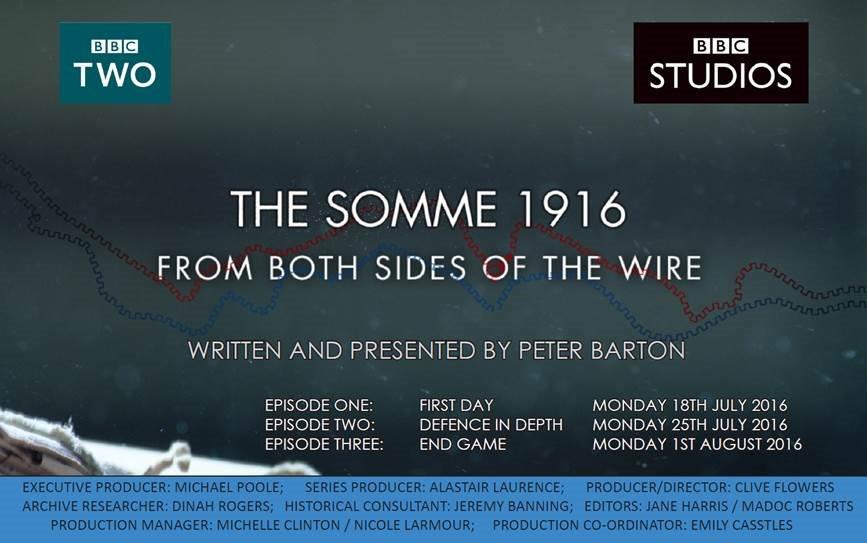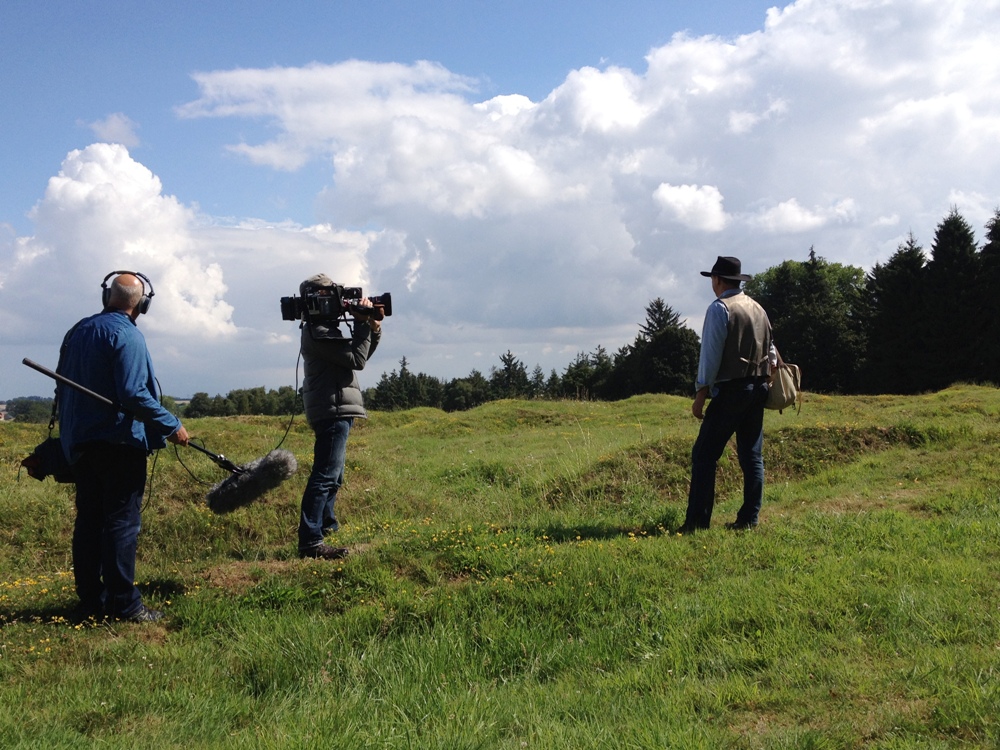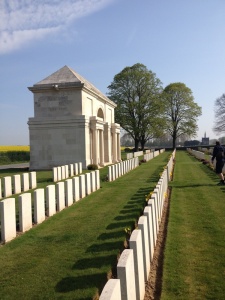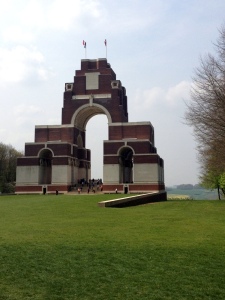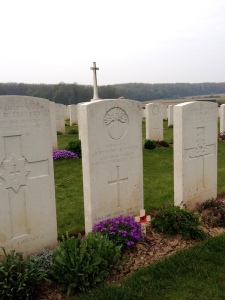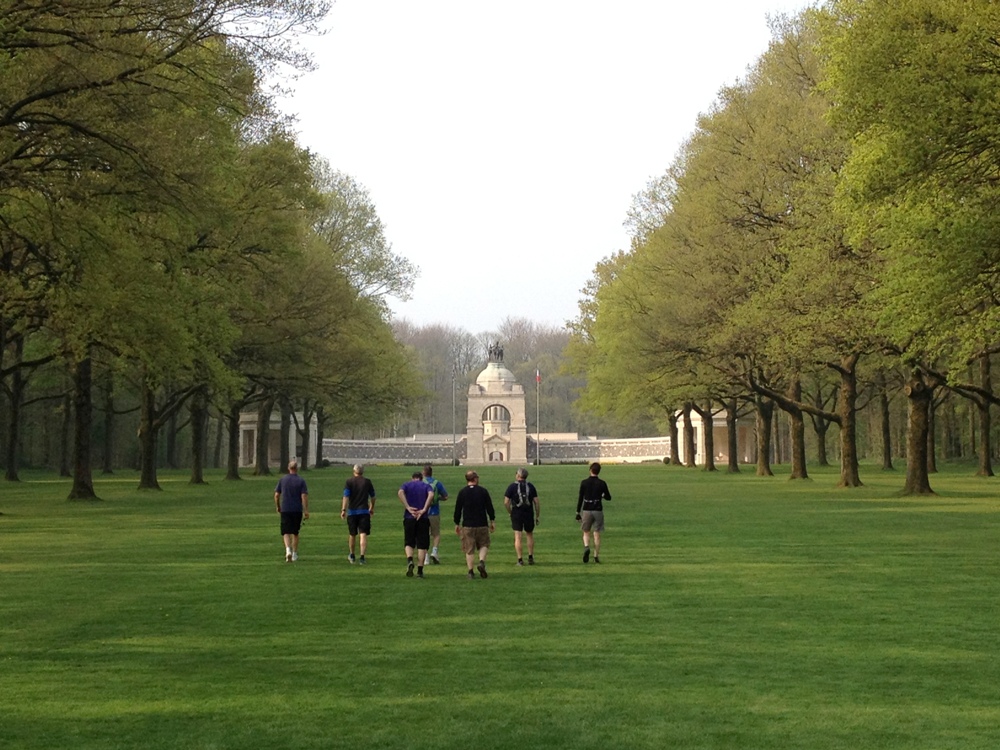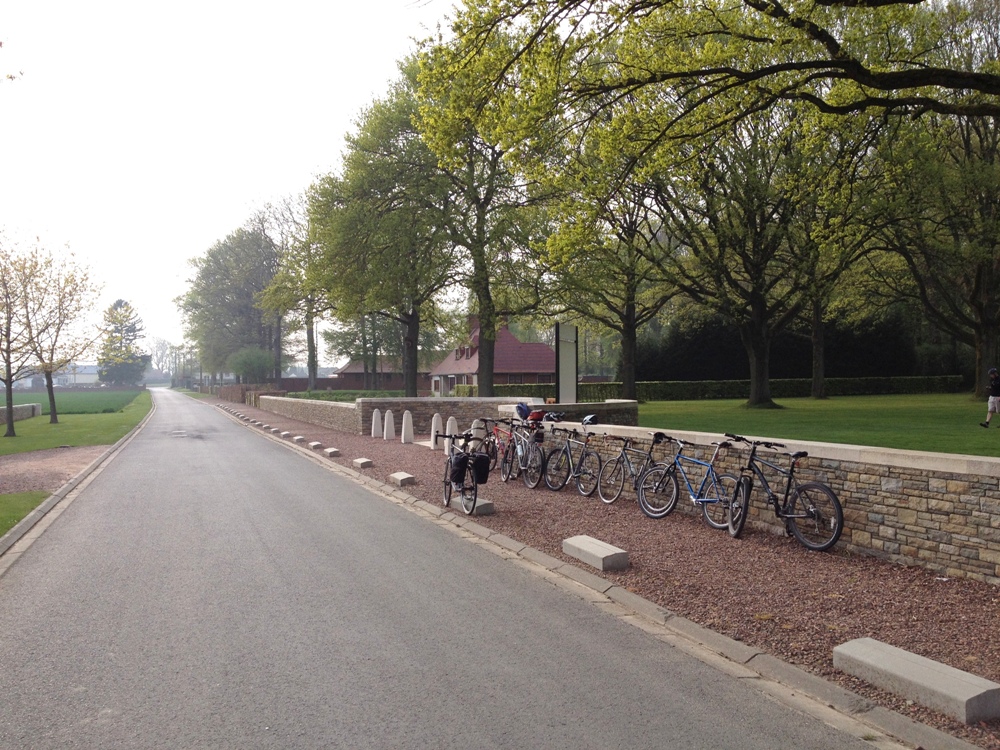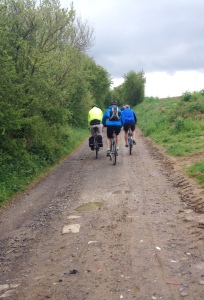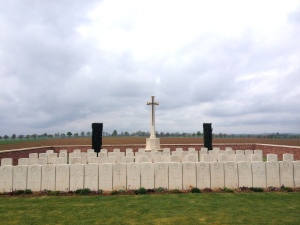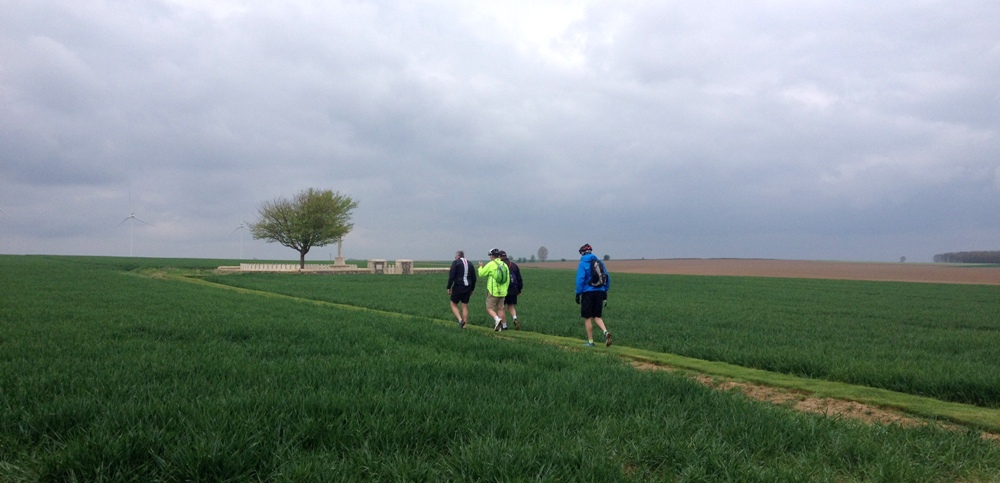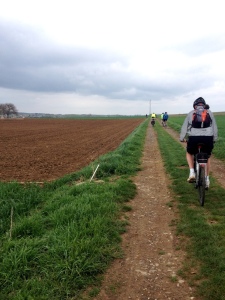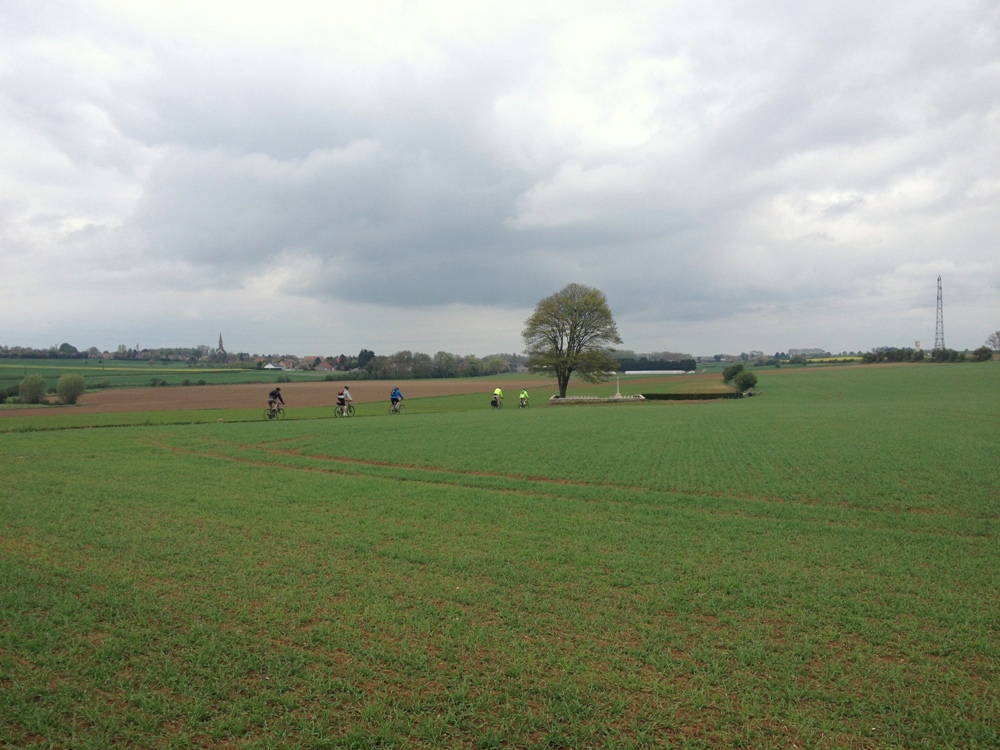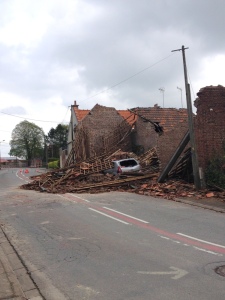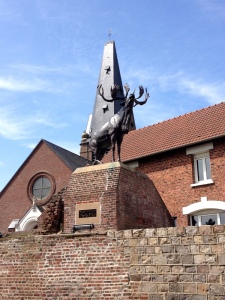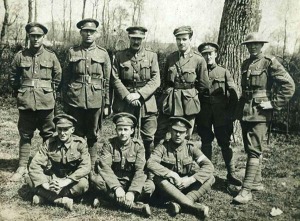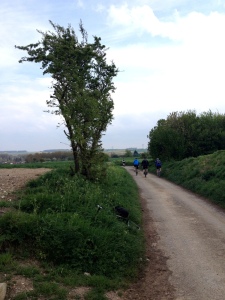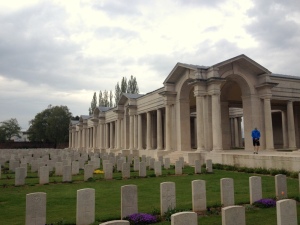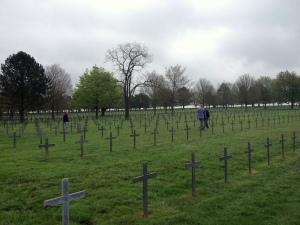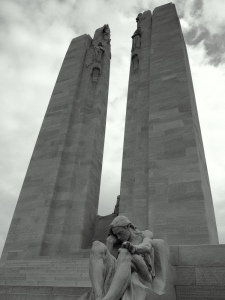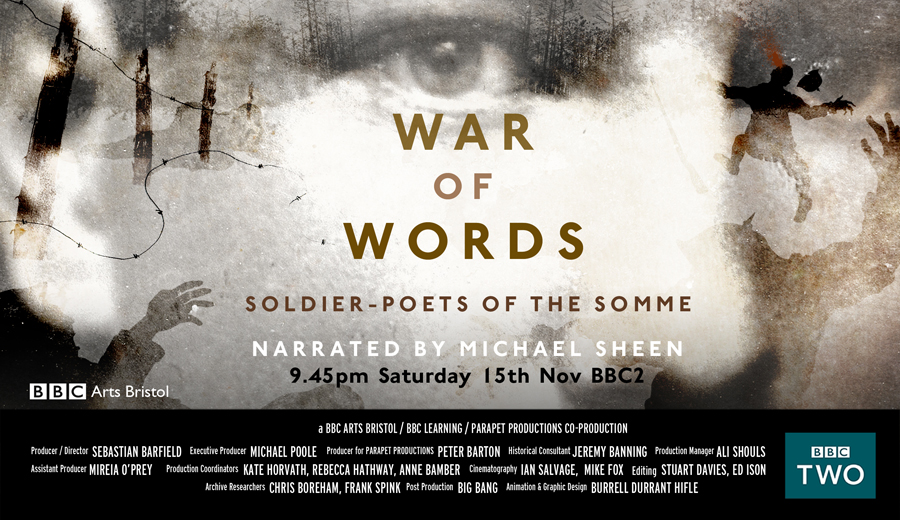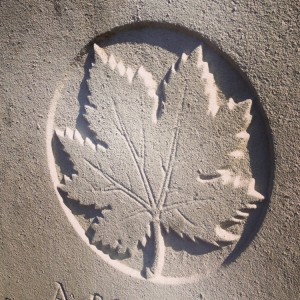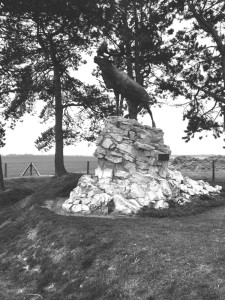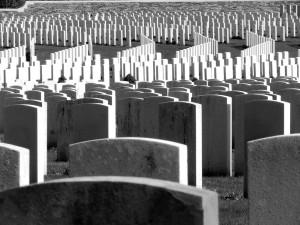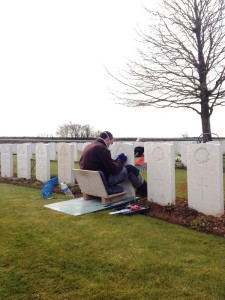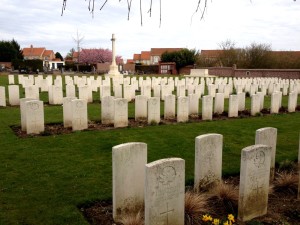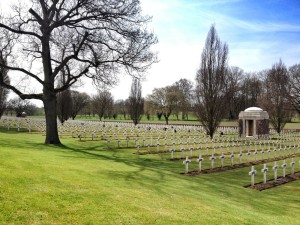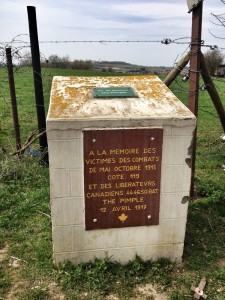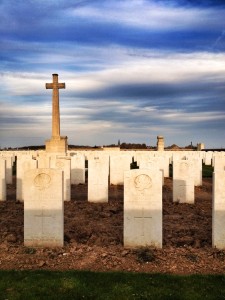Posts Tagged ‘Somme’
New Battlefield Tour announced! Western Front Footsteps: Stories of courage and endeavour above and below the battlefield and the postwar reconstruction of French communities, 24-27 September 2021
Following the success of the four years of Bristol and West Country based battlefield tours (2016-19) organised with fellow historian, Clive Burlton, we are pleased to announce another trip for autumn 2021. Our 2020 tour was cancelled due to the coronavirus pandemic, hence we are carrying over our suggested plans for that tour to 2021. Our focus is not solely actions by units from the West Country but on this tour will look at the role of the Tunnelling Companies and their incredible underground war, fought deep beneath No Man’s Land. We will also visit sites and tell stories associated with the post-war reconstruction of French communities.
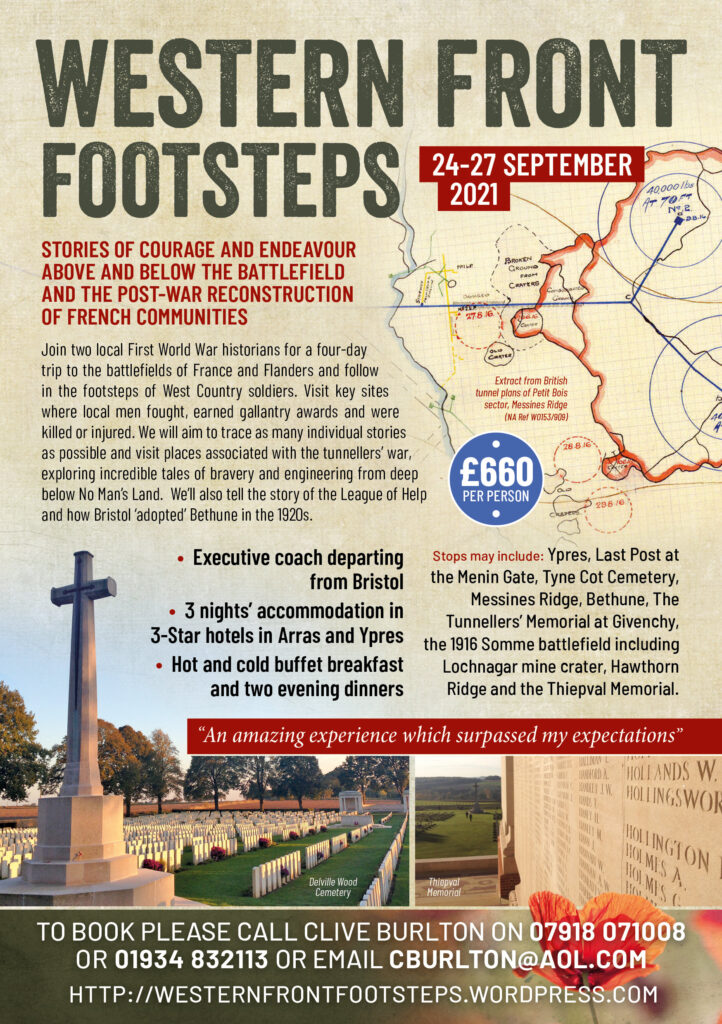
Once again we are travelling with our partners at Bakers Dolphin. The three night, four day tour will visit key sites associated with the West Country. Travelling by executive coach we will depart from Bristol on 24 September and travel to Arras, stopping at sites of interest en route.
The next day will be spent on the 1916 Somme battlefield with a look at the tunnelling exploits at such famous sites as Hawthorn Ridge, La Boisselle, Bois Francais and Carnoy. As ever we will ensure that we stop at key battlefield sites including the Thiepval Memorial.
On 26 September we will journey northward to the sacred Ypres salient and Messines Ridge, a key battleground for the tunnelling war. En route we will visit Bethune and the Tunnellers Memorial at Givenchy-les-la-Bassée for the tale of Sapper William Hackett VC, the only tunneller recipient of the Victoria Cross. Whilst in Ypres we will attend the Last Post ceremony at the Menin Gate. Other key sites around the salient will be explored.
As ever, our tour will cover the stories of relatives of those who join us. Please do send details and we will endeavour to visit individual graves and battlefield sites if time permits.
Accommodation is based at the following 3-star hotels – Holiday Inn Express (Arras) and the Novotel (Ypres). Full details of cost, what is included and contact details to reserve a space can be found on the attached flyer and via our dedicated website: https://westernfrontfootsteps.com/.
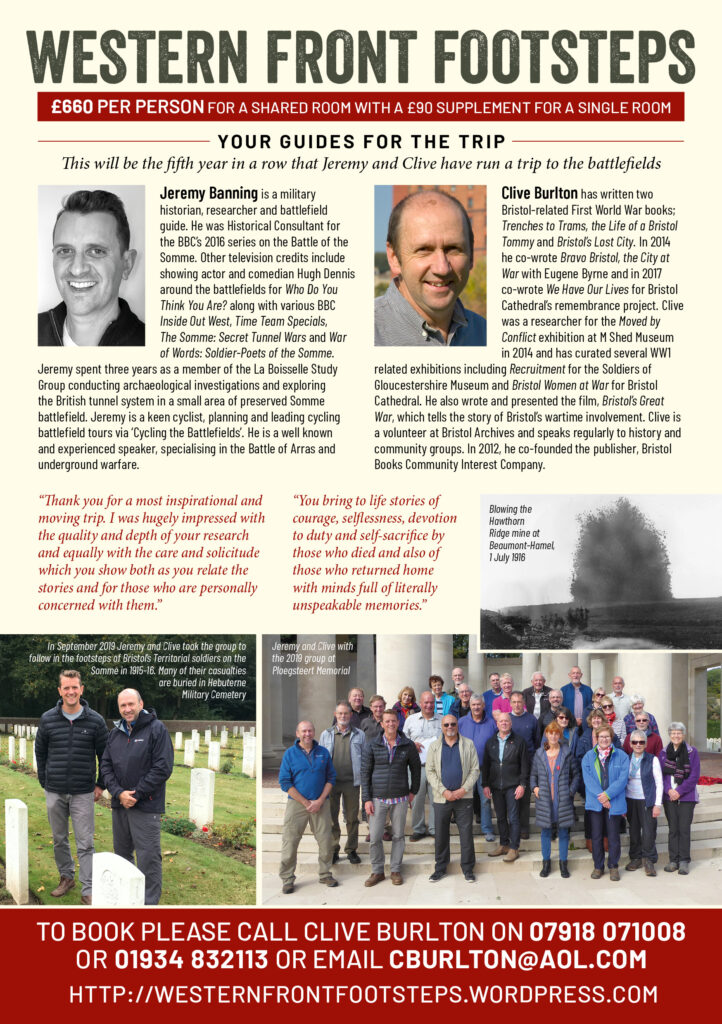
We look forward to you joining us for another wonderful few days following in some Western Front Footsteps…
Filming with David Walliams for Who Do You Think You Are? and a look into his great-grandfather’s wartime service
Back in early March just before lockdown I spent a half day filming with David Walliams at the Guards’ Chapel for the new series of Who Do You Think You Are? David’s episode was broadcast tonight, 19 October, on BBC One. I was asked to set the scene for David’s great grandfather, John Boorman, who served in the Grenadier Guards.
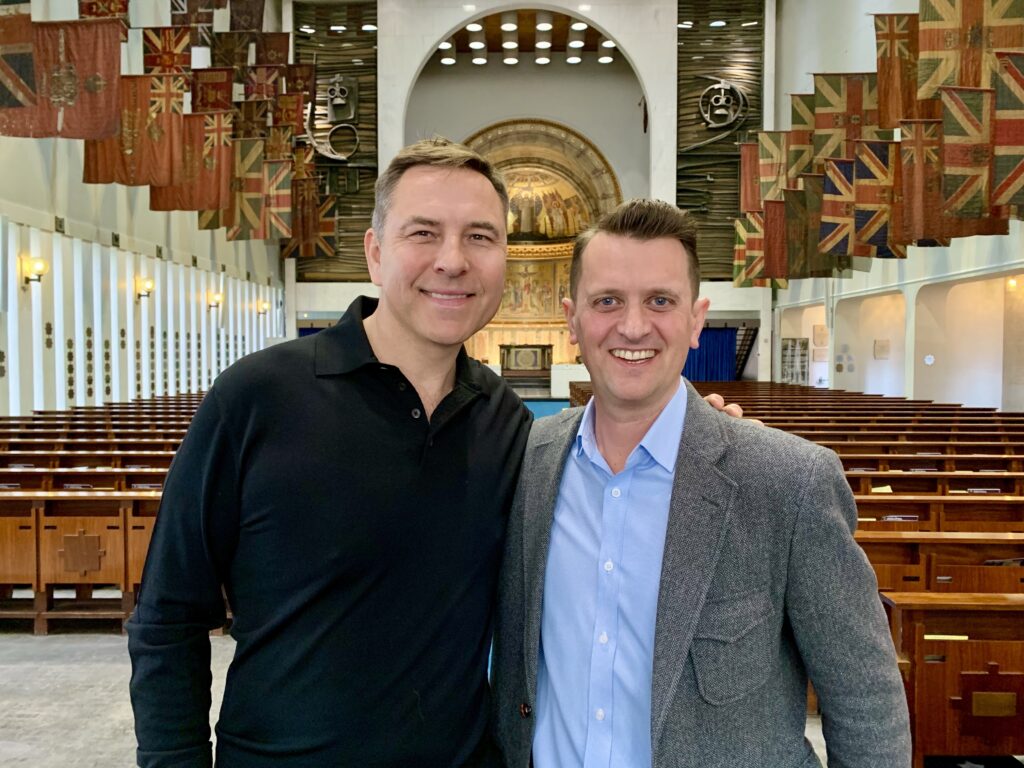
With David Walliams at the Guard’s Chapel filming Who Do You Think You Are?
His was a fascinating but ultimately tragic story. Having enlisted at the end of September 1914 it is possible that his above average build (he weighed 140 pounds and had an expanded chest of 36 inches) alongside his height of 5 feet 9 inches meant he was guided in the direction of the Guards by recruiters.
Having undergone training John proceeded overseas. His Medal Index Card and surviving service record confirm his date of arrival in France as 16 March 1915. John joined the 1st Battalion and while the service record does not say when he joined them, the battalion’s war diary notes the arrival of a draft of six officers and 350 men on 20 March 1915. It is assumed John was in this draft.
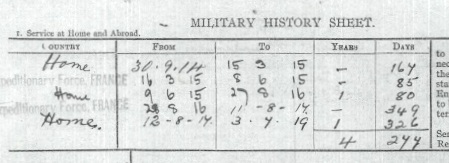
Extract from John Boorman’s service record showing time spent in the UK and overseas
Two months of trench routine and a few weeks break in divisional reserve during which the battalion practice drill and route marching precede John’s first battle, the Battle of Festubert. In comparison to the titanic battles of 1916 & 1917 this affair, in the flat lands of French Flanders, was small but no less bloody. To soften up German positions over 100,000 shells had been fired before the assault. Early in the morning of 16 May the 1st Grenadier Guards followed behind the 2nd Border Regiment, passing through them to attack German trenches. There was no great distance gained and it certainly didn’t alter the course of the war but this action was John’s first taste of the harsh brutality of war. Battalion reports describe close quarter fighting, killing the enemy, taking prisoners plus clearing trenches by throwing bombs. It was a tough baptism of fire, as recorded in Ponsonby’s Volume 1 of The Grenadier Guards in the Great War of 1914-1918:
The 1st Battalion Grenadiers came in for a great deal of shelling, and one shell burst in the middle of No. 8 Platoon, killing four men and wounding many others, including Lieutenant Dickinson and Lieutenant St. Aubyn, who was struck in the face by a piece of shrapnel. All the time a stream of wounded from the front trenches was passing by, some walking and some on stretchers.
Another entry in the Guards’ history records:
Rain began to fall at 6 p.m., and grew into a steady downpour. In the newly won trenches the men were soaked to the skin, and spent a miserable night. Everywhere the wounded, both British and Germans, lay about groaning.
For someone with only two months service in France those images must have made an impression. During the action at Festubert the 1st Battalion lost 2 officers killed, 2 officers wounded and 113 Other Ranks killed, wounded and missing.

Guards at the Battle of Festubert, May 1915
John was invalided back home for fifteen months, suffering from shell shock and returned to France on 28 August 1916. What is unclear is exactly when he rejoined the battalion as September 1916 sees many drafts arrive – 90 Other Ranks on 15th, 60 on 17th, 35 on 19th, 20 on 22nd, 23 on 27th and 72 on the 30th.
Those fresh men were much needed as the battalion was heavily involved in the Battle of the Somme that month. The attack towards the village of Lesboeufs was a costly affair for the Grenadier Guards, now part of the Guards Division. They had been in action on the 15/16th September but it was on the 25th that they took a major part. A few days prior to this the battalion was employed digging assembly trenches from which they would attack. The assault of the 25th was a success with the 1st Battalion passing through other Guards units to take their objective. The war diary has the wonderful line ‘Huns thoroughly demoralised’. Demoralised they may have been, but John’s battalion had paid the price for their success. In 11 days of action from 15-26 September they sustained a staggering 611 casualties.
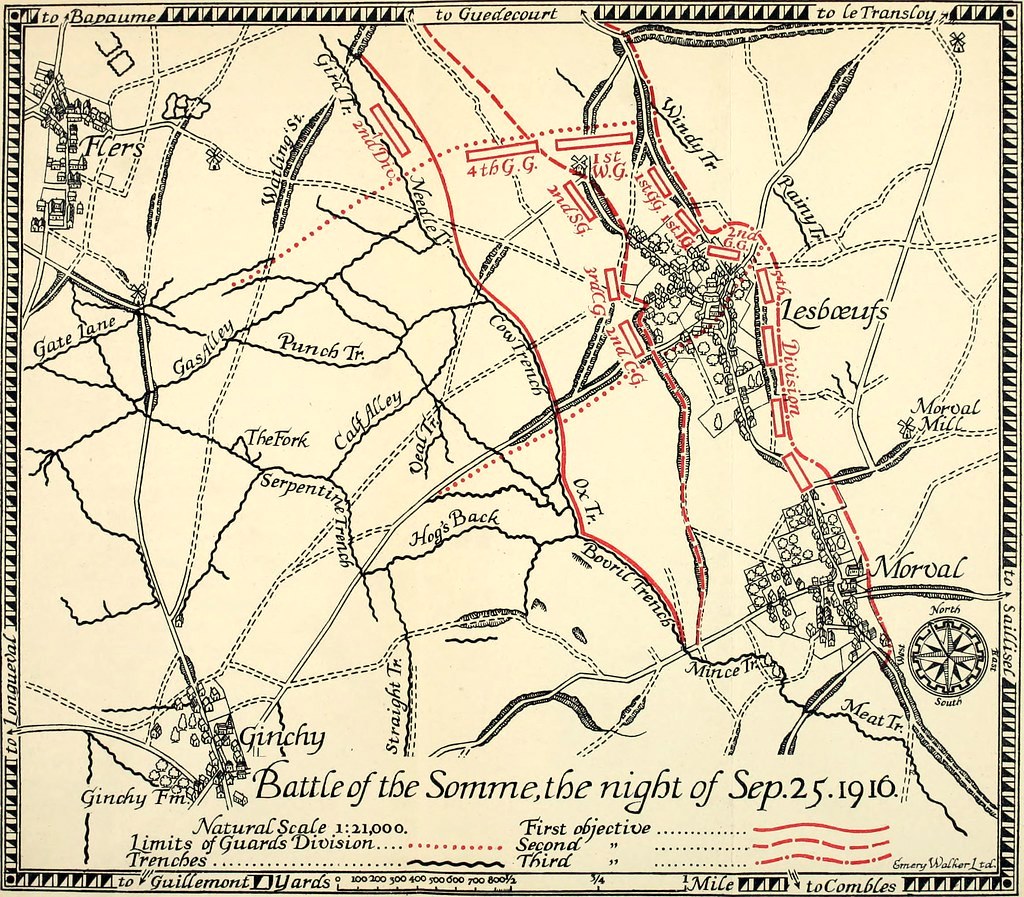
Guards Division on 25 Sept 1916 at the Battle of the Somme
The month of October was spent way out of the line, absorbing new reinforcements and training before moving back to ground west of Lesboeufs in mid-November. By this time the Battle of the Somme was coming to an end. At least the men would no longer have to leave their trenches to assault enemy positions. But that did not mean an end to casualties – enemy shellfire saw to that. Holding exposed shellhole positions joined up to make short sections of trenches, John’s battalion endured mud and tough conditions that the battle had created. Even getting to frontline positions meant miles of trudging along muddy paths and duckboard tracks. Safety, warmth and aid would have seemed a long way away.
Having contended with autumnal mud it was a horribly cold winter with temperatures falling to minus 20 Celsius for a six week period. One blessing of this plummet in temperatures was the mud froze, but so did water…and men. The main enemy at this point was the weather, not the Germans. In mid-March John was admitted to No.34 CCS for treatment of lumbago and “ICT feet”. Having endured such terrible trench conditions many men suffered problems with their feet. It is likely that John moved to a hospital in Rouen, thereby missing his battalion’s part in pursuing the Germans in their retreat to the Hindenburg Line. At some point he rejoined his battalion and moved northward to the Belgian city of Ypres. This was for the start of the Third Battle of Ypres (Passchendaele) during which the Guards Division attacked on the opening day, 31 July 1917.
And for the filming with David, this was as far as I got! I was asked to set the scene for John’s war up to this point. David went over to Ypres and was shown where his great grandfather was wounded. The records show John Boorman arrived back in the UK on 11 August 1917 having been wounded in the left leg below the knee. Despite escaping the horrors of the battlefield John’s war continued. In April 1918 he was admitted to hospital and found to be suffering from mental instability (delusional insanity). A few months after he was transferred to the County of Middlesex War Hospital which contained a specialist military mental hospital. Sadly, it appears John never recovered from the mental scars of service on the Western Front and died, still in care, in 1962. His is a tragic story that reminds us of the enduring effect that war had on many men. While some seemed to return to civvie life and get on with things, return to work, raise a family and function normally, other men were unable to do so and suffered mental anguish for the rest of their lives.
My thanks to the estimable Chris Baker of https://www.fourteeneighteen.co.uk/ who did so much of the research into John Boorman’s story and provided me with a copy of the report he had prepared for Wall to Wall.
JB
Following the success of the last three years of Bristol and West Country based battlefield tours organised with fellow historian, Clive Burlton, we are pleased to announce another trip for this coming autumn. This time our focus is not solely actions by units from the West Country but a look at associated stories of the postwar period of battlefield tourism and creation of Commonwealth War Graves Commission cemeteries.

Once again we are travelling with our partners at Bakers Dolphin. The three night, four day tour will visit key sites associated with the West Country. Travelling by executive coach we will depart from Bristol on 27 September and travel to Arras, stopping at sites of interest en route. If time permits we will visit Fresnoy near Arras where the 12th Gloucesters (Bristol’s Own) fought with heavy losses in May 1917.
The next day will be spent on the 1916 Somme battlefield with a look at the Bristol Territorials at Hebuterne and a visit to key battlefield sites including the Thiepval Memorial. On our way down to the Somme we aim to stop at Mory Abbey Military Cemetery to hear a most moving story of a father’s love for his son.
On 29 September we will journey northward to the sacred Ypres salient , the wartime cauldron for so many of Britain’s soldiers. Whilst in Ypres we will attend the Last Post ceremony at the Menin Gate and walk in the footsteps of the 1st Somerset Light Infantry in December 1914 at Ploegsteert (known as Plugstreet to the Tommies). Other key sites around the salient will be explored. Throughout the trip we will be looking at the work of the war artists such as Nash, Levinson and Orpen.
As ever, our tour is based around the stories of relatives of those who join us. Please do send us details and we will endeavour to visit individual graves and battlefield sites.
Accommodation is based at the following 3-star hotels – Holiday Inn Express (Arras) and the Novotel (Ypres). Full details of cost, what is included and contact details to reserve a space can be found on the attached flyer.
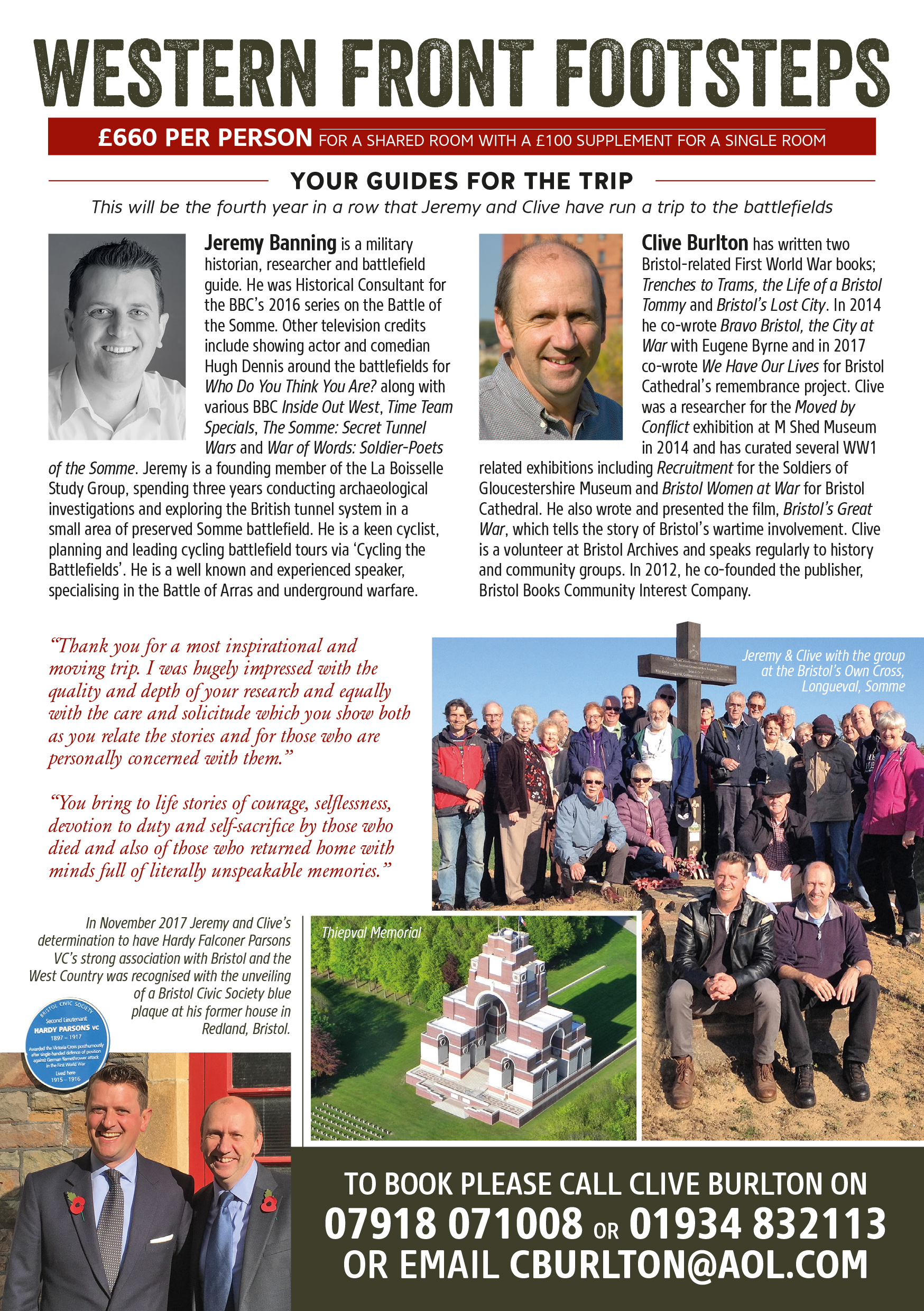
We look forward to you joining us for another wonderful few days following in some Western Front Footsteps…
New Battlefield Tour announced! ‘Western Front Footsteps’ 28 September – 1 October 2018
Following the success of 2016’s ‘Bristol on the Western Front’ and last year’s ‘The West Country at War’ tour trip that I organised with fellow historian, Clive Burlton, we are pleased to announce another trip for this coming autumn.
Stops will cover actions by units from Wiltshire, Somerset and South Wales as well as Bristol. The tour is named ‘Western Front Footsteps’.
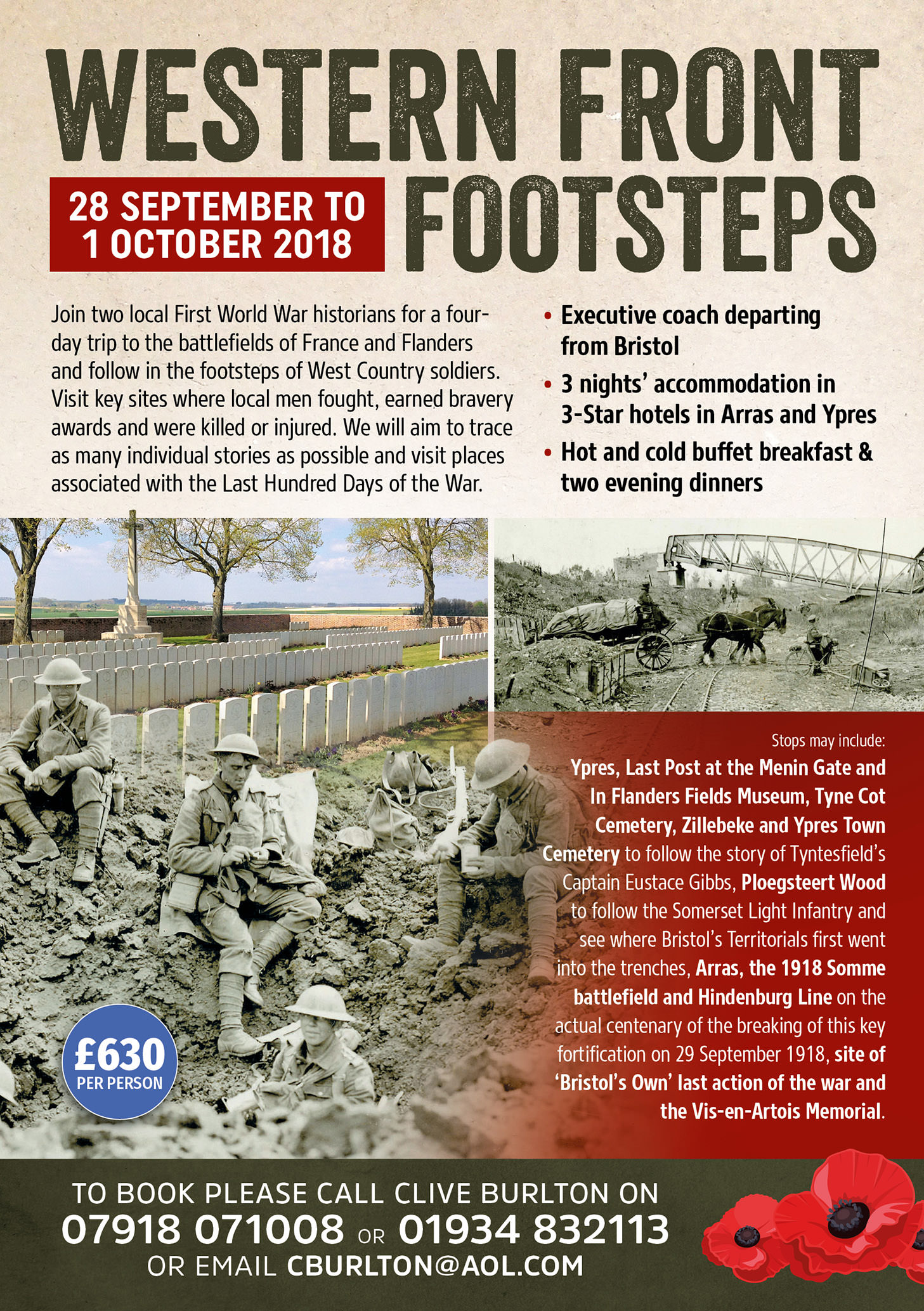
Once again we are travelling with our partners at Bakers Dolphin. The three night, four day tour will visit key sites where soldiers from the West Country fought, earned bravery awards and lost their lives.
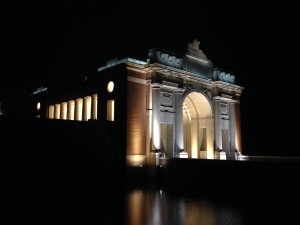
Menin Gate, Ypres
Travelling by executive coach we will depart from Bristol on 28 September and travel to Arras, stopping at sites of interest en route. The next day will be spent on the 1918 Somme battlefield on the centenary of the breaking of the Hindenburg Line – a momentous day that paved the way to allied victory. It is also the centenary of the last assault ever made by the 12th Gloucesters (Bristol’s Own) and we will walk their final attack. It will be special to visit this fascinating battlefield on such a poignant day.
On 30 September we will journey northward to the sacred Ypres salient , the wartime cauldron for so many of Britain’s soldiers. Whilst in Ypres we will attend the Last Post ceremony at the Menin Gate and visit the In Flanders Fields Museum in the Cloth Hall. Our time in Ypres will see us visiting sites around the salient including Ploegsteert (known as Plugstreet to the Tommies) to follow the 1st Somerset Light Infantry in December 1914, see where the Christmas Truce took place and visit the area in which Bristol’s Territorials first went into the trenches.

A key theme of this year’s tour will be looking into the wartime history of the Gibbs family from Tyntesfield (now a National Trust property) – their story is fascinating and heart-rending.

Ypres Cloth Hall – now the location for the In Flanders Fields Museum
Accommodation is based at the following 3-star hotels – Holiday Inn Express (Arras) and the Novotel (Ypres). Full details of cost, what is included and contact details to reserve a space can be found on the attached flyer.
We look forward to you joining us for another wonderful few days following in some Western Front Footsteps!
Following the success of last year’s ‘Bristol on the Western Front’ trip that I organised with fellow historian, Clive Burlton, we are pleased to announce another trip for October 2017.
This year we are broadening the net with less of a Bristolian focus. Stops will cover actions by units from Wiltshire, Somerset and South Wales. As such, we thought it apt to name the tour ‘The West Country at War’.
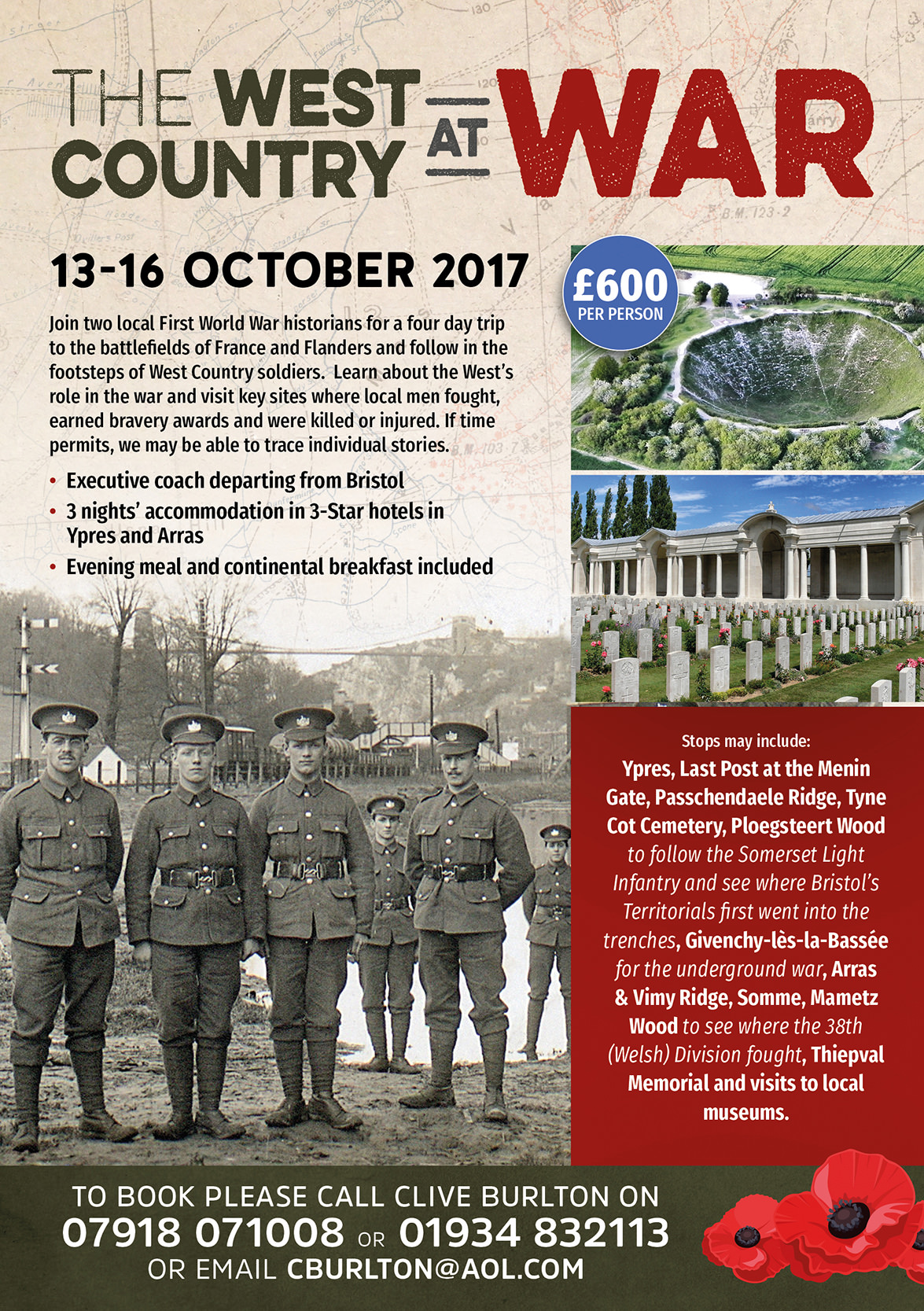
Once again we are travelling with our partners at Bakers Dolphin. The three night, four day tour will visit key sites where soldiers from the West Country fought, earned bravery awards and lost their lives.

Menin Gate, Ypres
Travelling by executive coach we will depart from Bristol on 13 October and travel to Arras, stopping at sites of interest en route. The next day will be spent on the Somme battlefields, visiting some well known (Mametz Wood) as well as lesser known sites on the 1917 battlefield!
The following day sees us journey northward to the sacred Ypres salient , the wartime cauldron for so many of Britain’s soldiers. Whilst in Ypres we will attend the Last Post ceremony at the Menin Gate. Our time in Ypres will see us visiting sites around the salient including Ploegsteert (known as Plugstreet to the Tommies) to follow the 1st Somerset Light Infantry in December 1914, see where the Christmas Truce took place and visit the area in which Bristol’s Territorials first went into the trenches.
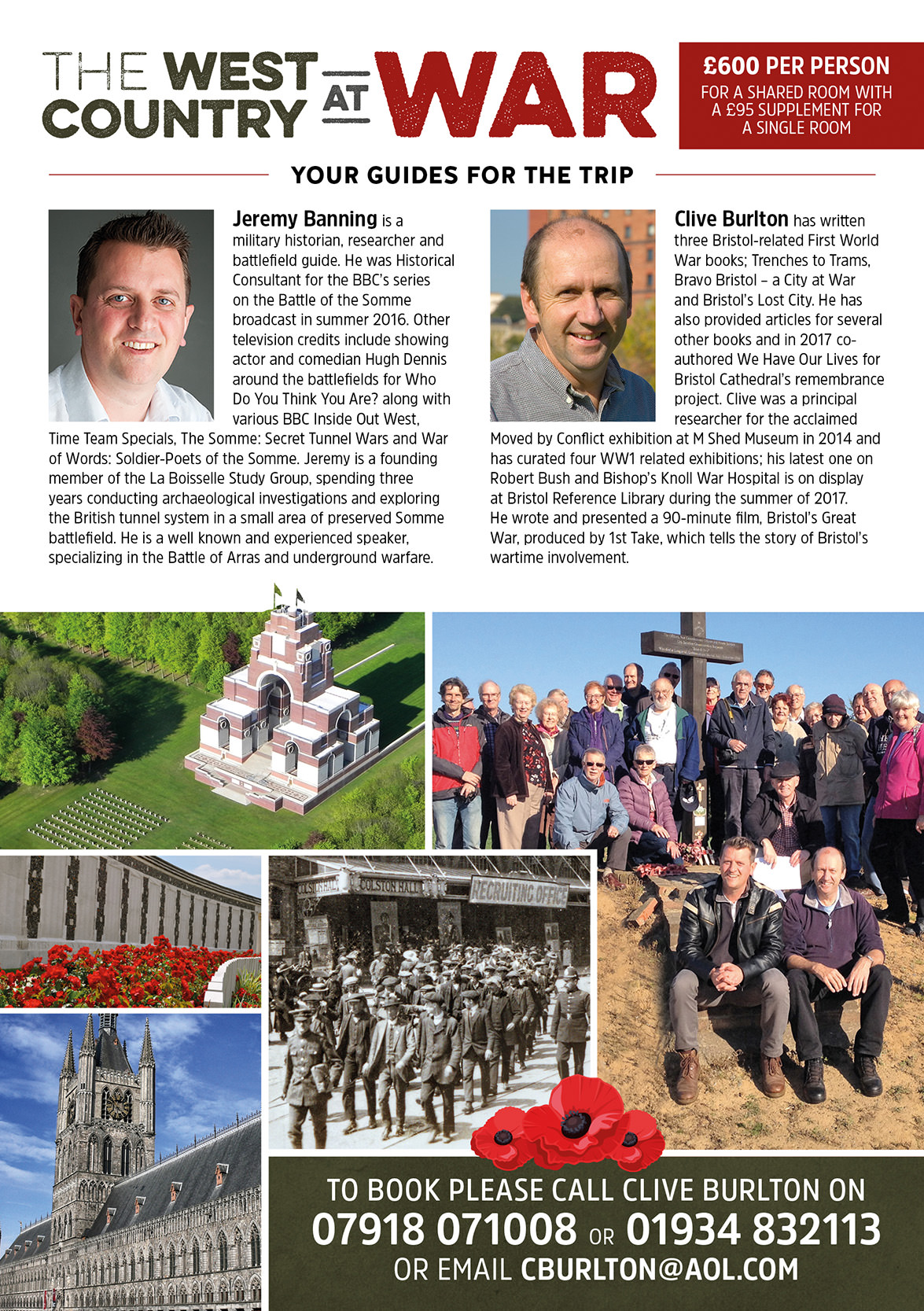
Accommodation is based at the following 3-star hotels – Holiday Inn Express (Arras) and the Novotel (Ypres). Evening meal and continental breakfast are included. If there is demand then Clive and I are happy to give evening talks. Last year we were heartened by the almost 100% attendance rate at our talks by those who had already had a long day on the battlefields.
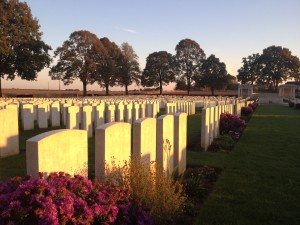
Delville Wood Cemetery, Somme
Full details of cost and contact details to reserve a space can be found on the attached flyer.
We look forward to you joining us for another wonderful few days!
Through my work for Historic England I have come to know many stories of Bristol’s soldiers in the war. A few years ago I met Clive Burlton, a local historian and writer with a superb knowledge of Bristol’s role in the war. Clive and I have given talks at the same venue on a number of occasions and over a post-talk beer often discussed the possibility of running a coach tour to the battlefields for people who want to find out more about Bristol’s wartime story.
So, here we are! I am pleased to announce that, with our partners at Bakers Dolphin, we are running a special tour:
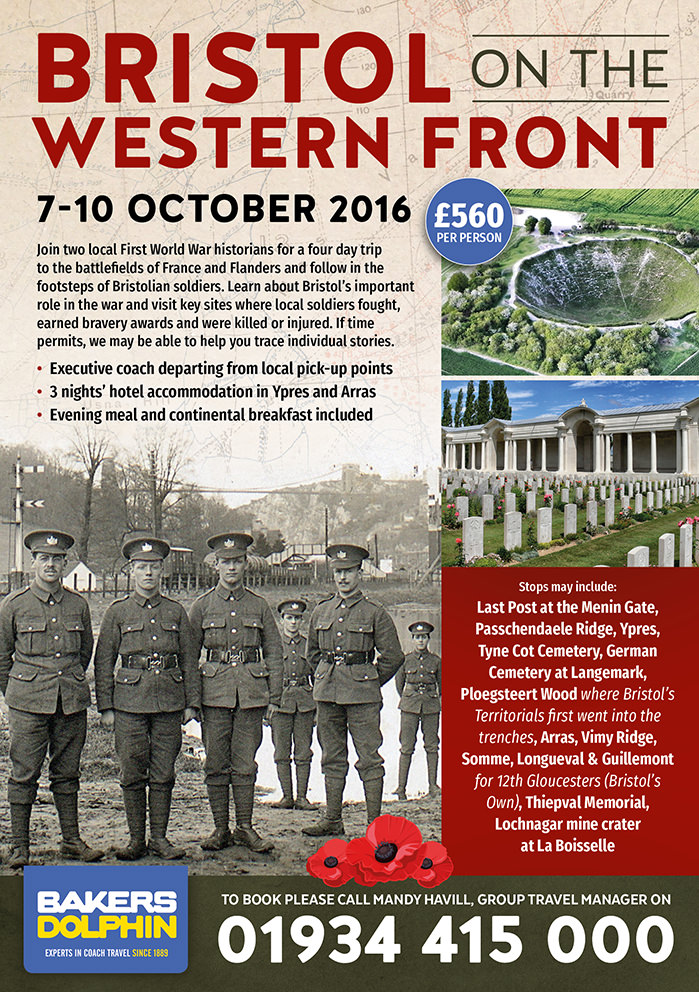
The three night, four day tour will visit key sites where soldiers from Bristol fought, earned bravery awards and lost their lives.
Travelling by executive coach we will depart from Bristol on 7 October and travel to the sacred Ypres salient, the wartime cauldron for so many of Britain’s soldiers. That evening we will attend the Last Post ceremony at the Menin Gate that night. The next day sees us visiting sites around the salient including Ploegsteert (known as Plugstreet to the Tommies) to see where Bristol’s Territorials first went into the trenches before heading south to Arras, our base for the remainder of the trip.
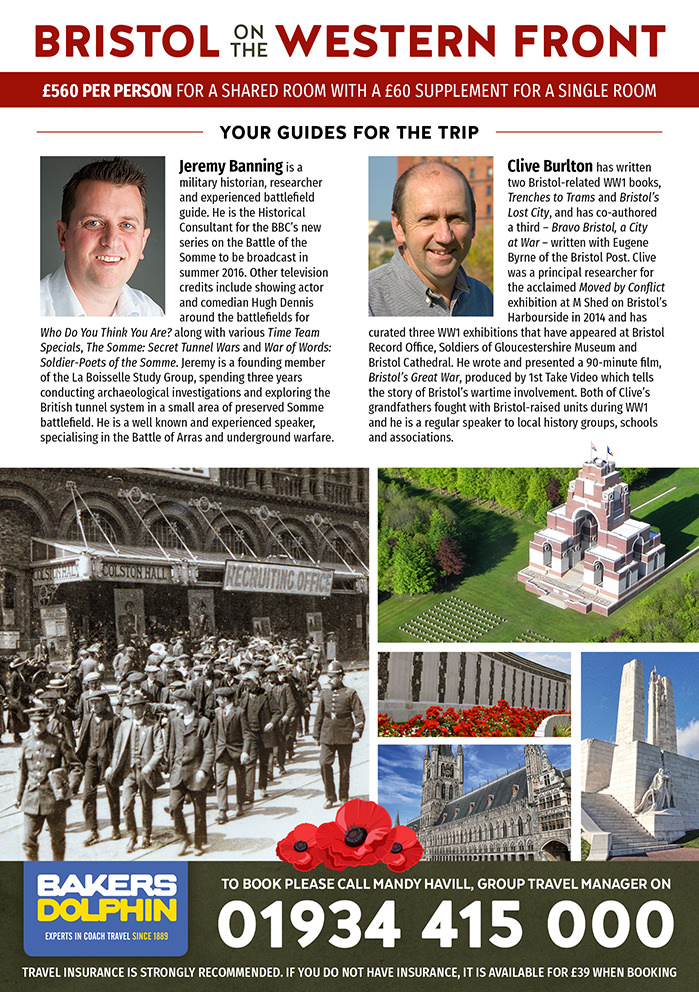
On Saturday 9th we will spend a day on the Somme battlefields, visiting key sites such as Newfoundland Memorial Park, Thiepval Memorial and the Lochnagar Mine Crater. We will also look at the story of the 12th Gloucesters (Bristol’s Own) in their actions at Longueval and Guillemont. The morning of our final day will be spent on the Arras battlefield, looking at the events surrounding the 12th Gloucesters (Bristol’s Own) action at Fresnoy on 8-9 May 1917.
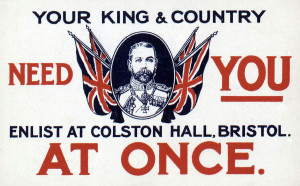
Wartime recruiting card for local soldiers to enlist at Colston Hall, Bristol
Accommodation is based at the following 3-star hotels – Novotel (Ypres) and Holiday Inn Express (Arras). Evening meal and continental breakfast are included. If there is demand then I will give a talk on the tunnellers’ war after dinner one night and Clive on a particular Bristol story the next night.
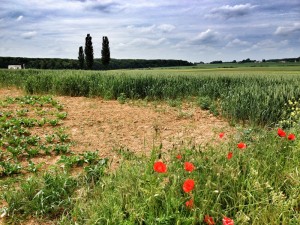
Guillemont – 12th Gloucesters (Bristol’s Own) attacked close to here on 3 September 1916
Individual visits can be accommodated if time permits and locations are close by.
The cost is a competitive £560pp, based on a shared room. For more details please contact me HERE or Mandy Havill, Group Travel Manager on 01934 415 000. I look forward to meeting you on the tour and sharing in Bristol’s fascinating history.
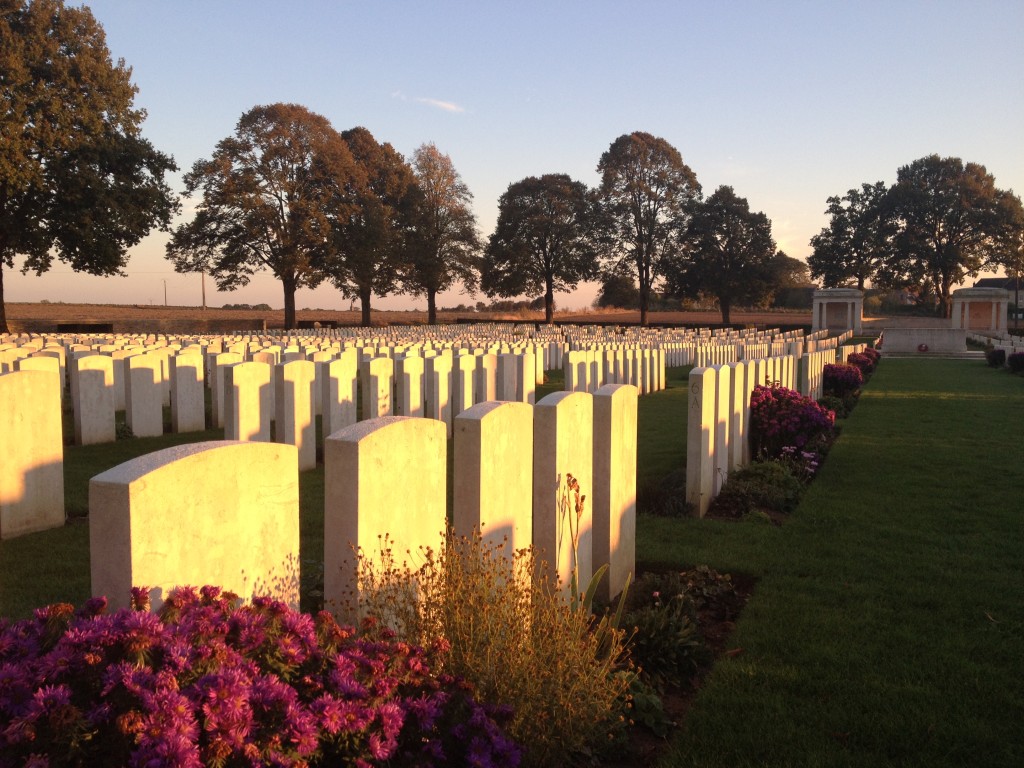
Delville Wood Cemetery, Somme
Last weekend I had the pleasure of guiding nine gentlemen around the Somme and Arras battlefield on bikes. As a keen cyclist I try and take my bike when visiting the battlefields but this was something different in that it was the first organised specialist cycling trip I had put together.
Our base was the delightfully comfortable Les clés des places in the heart of Arras. The Somme was our destination on Friday, leaving the neglected battlefields of Arras for the Saturday.
Day One – The Somme
Friday morning dawned with beautiful weather. With the bikes fixed to the cars we headed south, crossing the ground voluntarily given up by the Germans as they pulled back to the Hindenburg Line in 1917. Parking at Serre Road Cemetery No.2, we got the bikes ready and headed off.
I had sent our proposed route to the group beforehand so everyone was aware of the distances involved. After an introduction of the battle and practices of the CWGC at Serre Road No. 2 we headed across Redan Ridge with its isolated ribbon of battlefield cemeteries to the small village of Beaumont Hamel. As one of the Somme’s most well visited sites with a highly evocative story the Sunken Lane offered our first chance to get to grips with the actions of July and November 1916. After hearing a 1st Lancashire Fusiliers officer, Lt E.W. Sheppard’s description of the 1 July attack we rode via Auchonvillers to Newfoundland Memorial Park where we had a good walk around the trench system, visiting all three cemeteries. The descent to Hamel was fun; infinitely more so than the climb up the Mill Road to the Ulster Tower! One of the group had previously served in the Duke of Wellington’s Regiment so I was able to show him the Pope’s Nose and discuss the 1/5th Battalion’s attempt to capture the position in September 1916.
After a visit to Lutyen’s imposing Thiepval Memorial and our first (and only) puncture of the day we headed via Mash Valley for lunch at the Old Blighty Tea Room in La Boisselle. Subsequent stops included the Lochnagar mine crater, Becourt, Fricourt and Mametz.
From the bottom of Dantzig Alley Cemetery we surveyed the undulating ground in front of us, a familiar view to the British in July 1916. Dominating the landscape is Mametz Wood, scene of so much heartache and horror for the 17th (Northern) and 38th (Welsh) Divisions. Our tour continued up to Montauban and Trônes Wood before a stop at Guillemont Road Cemetery where we paid our respects at the grave of Raymond Asquith, 3rd Grenadier Guards.
Raymond, the son of the Prime Minister H. H. Asquith has been described as ‘one of the most intellectually distinguished young men of his day’. He had been mortally wounded at the start of the Guards’ attack on 15 September 1916 and died on his way to a dressing station.
One of our group was a former Coldstream Guards officer and so we deviated from the original plan, heading to the Guards Memorial between Ginchy and Lesboeufs. The exposed position on the ridge to Lesboeufs is in the centre of the ground over which the Division fought in the second half of September 1916.
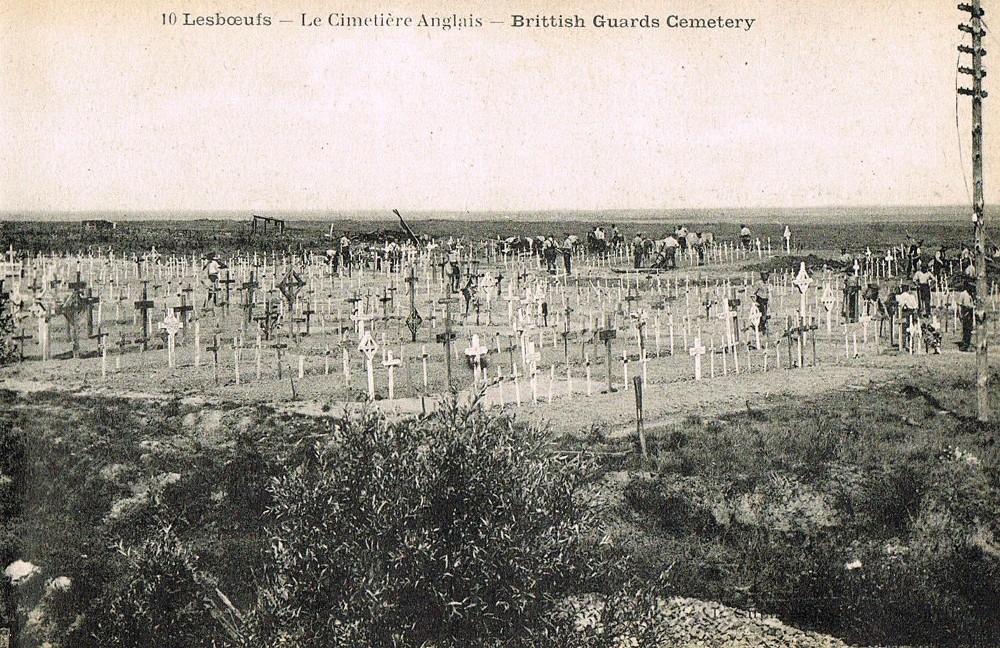
Postwar image of Guards Cemetery, Lesboeufs. The contrast between the haphazard crosses in this postcard and the neat rows of Portland headstones that greet the modern visitor is testament to the skill and dedication of the CWGC.
Our route back across the battlefield took in Delville Wood, looking a perfect picture of peace in dappled sunlight – the polar opposite of summer 1916.
Next up was High Wood where I described the ferocious fighting that had raged there through the high summer of 1916. The wood and Switch Line proved such a bulwark to advance that British efforts resorted to siege warfare techniques; employing Vincent and Livens Large Gallery Flame Projectors in the wood along with the use of tunnellers to plant a mine under German positions. In the late afternoon light of a perfect spring day it was hard to imagine the carnage in these quiet mellow fields and woods.
Crossing the Roman road we headed via Courcelette to Miraumont, along the Ancre valley to Beaucourt before a gentle climb up past Ten Tree Alley en route back to the cars. The conversations that night over a much-needed dinner and drinks all touched on the benefits of cycling in helping everyone’s appreciation of the battlefield.
View this route on plotaroute.com
Day Two – Arras
We awoke the next morning with slightly aching legs and for some, aching heads. There was no need for cars as we would be setting out directly from our hotel. Whilst the touristy spots of the Somme were packed with coaches and school groups the empty fields around Arras are a very different proposition. I assured our travellers that other than farmers and locals we would have the Arras battlefield to ourselves. Heading south via Beaurains (a bike path runs alongside the road for much of this) and London Cemetery we rode to Neuville-Vitasse, a village which in April 1917 was wired into the German defences with the main Hindenburg Line running just behind it.
Heading up the bumpy track to Neuville-Vitasse Road Cemetery was fun. From its dominating position I spoke of the 30th Division’s attack on 9 April 1917, the start of the Arras battle. The closely packed graves of the cemetery are predominantly made up of men from the 2nd Wiltshires and 18th King’s (Liverpool Regiment) who suffered grievous losses attacking across this ground.
I explained the connection with Hugh Dennis’s grandfather, Godfrey Hinnels, whom I had researched for the television programme, ‘Who Do You Think You Are?’ Godfrey’s unit, the 1/4th Suffolk Regiment were tasked with salvage and burial duties in the days after the main attack. As such, it was likely he had been involved with the burial of the men that now lay in the cemetery’s walls.
Next up was Cojeul British Cemetery which is the resting place, amongst others, for two Victoria Cross recipients – Horace Waller, 10th KOYLI and Arthur Henderson, 2nd Argyll & Sutherland Highlanders.
Climbing Henin Hill we visited the remaining German pillbox (MEBU) before our next stop, the isolated and beautiful Cuckoo Passage Cemetery. This small battlefield cemetery, full of Manchester Regiment killed on 23 April 1917 lies at the limit of the Manchesters’ advance. I read aloud an account by Private Paddy Kennedy who served with the 18th Battalion describing events that buy mexican xanax day. Many of his comrades lay around us within the cemetery walls.
We returned back towards Heninel before picking the road up to Chérisy where I discussed the terrible events of 3 May 1917, the Third Battle of the Scarpe. Described by Cyril Falls in the Official History as ‘a melancholy episode’ the attack that day was an unmitigated disaster for the attacking British forces. British dead for the day reached nearly 6,000 for very little material gain.
Why cycling the battlefields is best…
Travelling by bike is by far the best way to appreciate the landscape; you feel every rise, every dip, every change in gradient. What would be a simple drive in a car takes on more meaning when on two wheels. Your thoughts turn irrevocably to the men whose footsteps still echo through the ground as, stealing a line from Sassoon, ‘they slogged up to Arras with rifle and pack’.
Continuing towards Hendecourt our focus changed for a short time as I described the Canadian successes of August and September 1918. Stopping at Sun Valley Cemetery I pointed out the formidable obstacles of Upton Wood and The Crow’s Nest (the latter captured with great daring by the 15th Battalion (48th Highlanders of Canada) on the morning of 1 September 1918). Passing Quebec Cemetery we dropped down for our picnic lunch at the idyllic Valley Cemetery between Vis-en-Artois and Chérisy. This spot is the final resting place of a number of highly decorated officers and NCOs of the 3rd Battalion, Canadian Infantry who were killed nearby at the end of August 1918. Amongst the 3rd Battalion men buried here is the 23 year old Lieutenant Edward Slattery, DCM, MM & 2 Bars. From the decorations received whilst serving in the ranks and his tender age he appears to have been quite some soldier.
Suitably refreshed we headed back towards Guémappe and across the Route National towards Monchy-le-Preux. The road was blocked in the village, the result of a recent building collapse. Undeterred, we headed west where I explained about the village’s capture and the terrible loss of British cavalry in its narrow streets on 11 April 1917.
Having visited the impressive 37th English Division memorial and the Newfoundland Caribou in the village we rode eastwards, up Infantry Hill where I was able to regale the party with the story of the ‘Men who saved Monchy’: the disastrous 14 April 1917 assault by the Newfoundlanders and 1st Essex Regiment.
Infantry Hill is a special spot for me, the scene of so much concentrated fighting and yet, like so much of the Arras battlefield, it remains rarely visited. It was in these fields on 3 May 1917, that disastrous date for the British Army, that one of our group’s great uncles, Private Thomas Clark, 8th East Yorkshire Regiment was killed. Standing close to the spot where the 8th East Yorkshires went over the top I was able to explain the actions that day, reading from the war diary to enable everyone to appreciate the disaster that befell the attacking British troops and the magnificent defensive performance of the German forces.
Extract from the 8th East Yorkshire Regiment after-action report for 3 May 1917 action on Infantry Hill, east of Monchy-le-Preux
The Battalion moved forward at Zero hour [3.45am] but owing to the heavy smoke combined with the darkness they found it difficult to move on any definite point or points.
A platoon commander of the right-hand leading company found himself advancing up a small ridge which is to the south of the copse in O8 Central where he ran up against machine-gun fire. He was joined by a KSLI officer and some men. They moved forward together, the KSLI officer was killed as well as a number of men and as the place was bristling with machine guns and the copse occupied by snipers he stayed down in shell holes, returning at night to HILL TRENCH with 11 men on receipt of orders to do so from Battalion HQ…
…The men were in good heart and moved forward readily. I attribute the results to the heavy smoke, combined with the darkness which prevented people locating their points of direction. In addition to this the enemy barrage was very heavy to which must be added the very effective use of machine-gun both from the front but also enfilading attacking troops.
Casualties: 35 killed, 161 wounded, 39 missing
After some time to contemplate we returned to the village before riding down the Scarpe Valley to Fampoux where we looked at its capture on 9 April 1917 by the 2nd Duke of Wellington’s Regiment. Next up was another special spot; the Seaforth Highlanders cross overlooking the Hyderabad Redoubt, Greenland Hill and Roeux. Whilst there I explained the disastrous 11 April 1917 attack and read aloud the wonderful description left by Seaforth Highlander Private James Stout of events that day.
It is a great shame there is nothing at the former site of the Chemical Works, so bitterly fought over during the battle to show the ferocity of fighting and losses sustained to secure its possession. The site is now a Carrefour mini supermarket where we bought a cool drink and snacks before our ride via Athies back into Arras.
Our final stop of the day was the Arras Memorial where Private Thomas Clark and a further 34,765 men are commemorated. One of the group found the grave of his great uncle in the adjoining Faubourg D’amiens Cemetery. Tired but satisfied at the ground we had covered we headed back to the hotel before a good evening meal and much chat.
View this route on plotaroute.com
Day Three – A quick look north of Arras and back to Blighty
Our final day was overcast and rainy. Bikes were attached to cars before we visited the huge German cemetery at Neuville St-Vaast and French cemetery at La Targette. Next up was the preserved battlefield on Vimy Ridge before our final stop at Walter Allward’s masterpiece, the Vimy Memorial atop Hill 145.
My thanks to the wonderful group who I accompanied and for their generosity and looking after me so well.
If you are interested in a battlefield tour by bike, either as a group or by yourself then please get in touch via the Contact Page. I would be happy to put an itinerary together for any British battlefield and am happy to cycle up to 50 miles/day. However, there is so much to see that 25-40 miles/day is the ideal distance.
I have recently received the TX card for the upcoming BBC Arts documentary ‘War of Words – Soldier Poets of the Somme’. It will be shown on BBC Two on Saturday 15 November at 9.45pm.
The 90 minute documentary which I worked on as historical consultant in 2013 follows literary figures who took part in the Battle of the Somme.
The documentary, presented by Peter Barton and directed by Sebastian buy ambien online bluelight Barfield, has its own dedicated page containing information, Director’s notes and preview clips: http://www.bbc.co.uk/programmes/b04pw01r
BBC iPlayer has a dedicated page showing an anthology of animated poems using the work of Robert Graves, David Jones, Siegfried Sassoon, W.N. Hodgson and Isaac Rosenberg to relay the experiences of these poets during the battle. See http://www.bbc.co.uk/iplayer/episode/p02b11yw/the-somme-in-seven-poems

